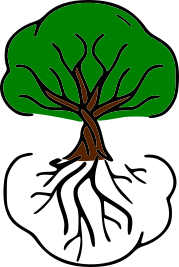Over the last two centuries human expansion has halted and almost destroyed natural habitat for many species across America. In recent time there has been multiple efforts to “rewild” or restore natural places to previous states. Recently there have been success stories with grizzly bears, wolves, and fishers in the North Cascades Ecosystem.
Grizzly Bears:
“Big grizzly populations in places like Yellowstone and the Northern Continental Divide, where about 1,600 grizzlies live, are recovery successes for the species.
Wildlife managers in other ecosystems are looking to those successes as they consider reintroducing bears into other parts of the West.
Only about 20 grizzly bears live in the North Cascades ecosystem of north central Washington. Jack Oeflke works for the North Cascades National Park.
”To get a few hundred animals there is could take 50 to 100 years,” says Oeflke. “So I’ll never see it, but working on it, and hoping we can steer it in that direction is pretty exciting.””
The above excerpt from Corin Cates-Carney describes how far behind the North Cascades ecosystem is compared to comparable wild spaces in regards to grizzly population. The success of both the Yellowstone and Northern Continental Divide sites strengthen the argument for grizzly reintroduction in the North Cascades.
Starting in 1997 the North Cascades was designated as a recovery zone for the bears. A lot of work was needed to be done to get the local population ready for a sizable bear population again. Two of their biggest tools: education and outreach.
Overall, Oeflke says, concerns about reintroduction have been far outweighed by support for bear recovery.
Grizzly Habitat in the North Cascades. Photo courtesy of the Seattle Times.
One such support is by Ron Judd, who shares a personal story with a group of bear juveniles.
“That evening, we rigged up our rods and made the short walk to the river mouth to meet the incoming tide, which was like none I had ever seen. Each long, slow wave cruising up the river was half water, half fish. Every cast into these waters produced a strike, form a coho or a feisty Dolly Varden.
To us, it was catch-and-release nirvana. To the four or five brown bears that soon emerged on the opposite side of the river, it was supper. Everyone present made eye contact and managed to avoid flipping out. We backed off and watched them fish. Gradually, they began ignoring us and concentration on feeding, moving slightly upstream, staying on their side of the river. At some point we shrugged, crept back to the river mouth and started fishing again. Peace prevailed.
I don’t really recommend this, and to this day, I’m not sure what possessed us to take the risk. Most of the bears were juveniles, and seemed utterly disinterested. But one, a massive so we saw skirt through the area, was the largest bear I’ve ever seen. I’m not sure I would stay there if presented with the same situation today. But at the time, it just seemed OK.
It is a cliche, but you sort of had to be there. I will never forget, fishing a river opposite those bears, the indescribable mixture of fear and reverence I felt in that place and time. With senses heightened off the charts, it was as if I had stopped observing the natural world, and for the first time, stepped all the way into it.”
Wolves:
Near the towns of Twisp and Omak in Okanogan County, a new wolf pack has started. Called Loup Loup it will be the official confirmed pack within Washington State boarders. The pack moved from Idaho and Montana on their own accord to the Methow Valley. While uncertain, biologists think there might be up to six in the pack.
Currently, the minimum wolf population in Washington State is 68 (without Loup Loup) which is a major improvement from a population of 27 four years earlier.
Washington Pack locations (without Loup Loup). Photo courtesy of Seattle Times.
Fishers:
For the first time in 70 years, fishers are back in Washington State. If you are unfamiliar with what a fisher is think of them like a large carnivorous weasel.
Late last year wildlife officials released seven back into the Gifford Pinchot National Forest. Transported in wooden crates from British Columbia these seven will start the re-population of fishers in the North Cascades.
90 have already been released into the Olympic Peninsula. Over the next few years a total of 80 fishers are planned to be released in the North Cascades.
Jeff Lewis and others releasing fishers into Washington’s Gifford Pinchot National Forest that came from British Columbia.
*I originally wrote this article for Chattermarks, the official blog of the North Cascades Institute. You can find all of my posts on Chattermarks here.




